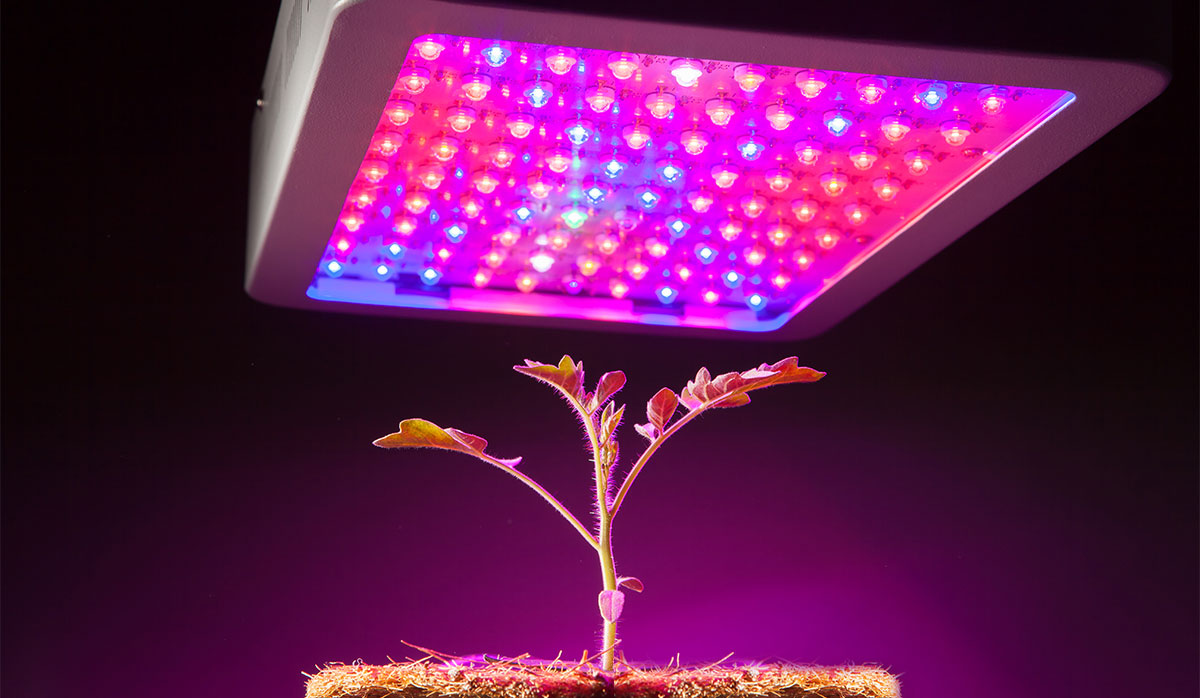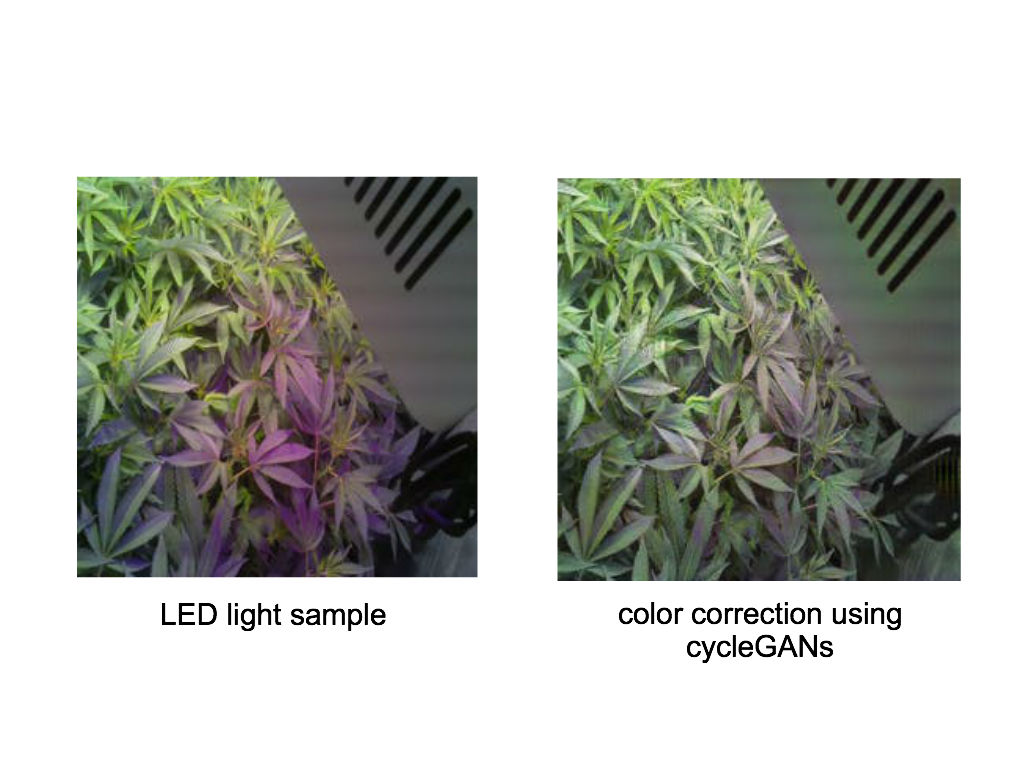GANs represent the state of the art in image-to-image translation. However, it can be difficult to acquire aligned image pairs to learn the mapping between image domains. CycleGANs introduced the “cycle consistency” constraint to learn to transfigure images, transfer style, and enhance photos from unaligned source and target domain samples.
This technique has been used to render historic black & white images in full color or to represent an image in greater resolution but here, we explore applications in agriculture.
LED lighting used in modern greenhouses typically have more Blue and Red diodes since this is the part of the light spectrum that plants use for photosynthesis.

Besides making it more difficult for humans see, this unnatural lighting makes it more difficult to recognize yellowing which is one way plants show stress.
While there exists fancy shades for color correction, we adopt a computer vision approach for our environmental controller prototype.
Traditionally, color temperature correction requires some manual manipulation. Inspired by the impressive work around image superresolution, we applied this technology to learn a curve filter for color correction.
By curating an image corpus of greenhouse photos, both under unnatural color temperatures produced by LED/HPS lighting as well as images under a natural white light, we trained a cycleGAN to translate images from the domain of LED lighting to full-spectrum.

Compared to other applications, this example shows the ability of GANs to treat the image locally. We are excited to explore additional applications of this powerful new computer vision technique.